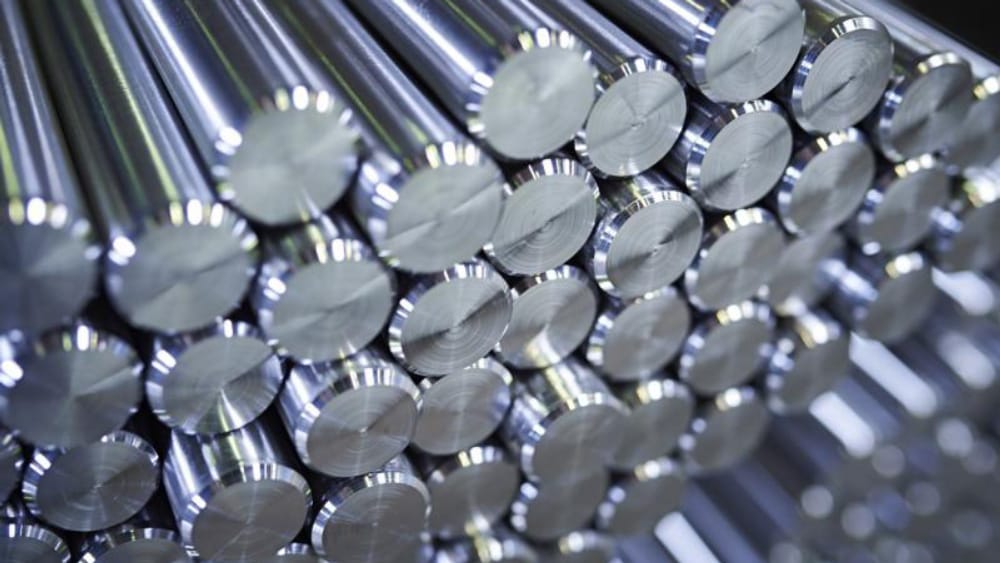Introduction

High speed steel (HSS) is a type of tool steel renowned for its ability to maintain hardness at elevated temperatures. This remarkable property makes HSS an indispensable material in various industries, particularly in manufacturing processes that involve cutting and shaping materials. In this comprehensive guide, we will delve into the intricacies of high-speed steel, exploring its composition, properties, applications, and the factors that contribute to its superior performance.
Understanding High Speed Steel
What is High Speed Steel?
High-speed steel is a complex alloy steel that contains significant amounts of tungsten, molybdenum, vanadium, and chromium. These alloying elements work synergistically to impart exceptional properties to the steel, enabling it to withstand the rigors of high-speed cutting operations.
Composition and Properties
The specific composition of HSS can vary depending on the intended application, but the core alloying elements and their roles are as follows:
- Tungsten: A primary alloying element, tungsten significantly enhances the red hardness of HSS, allowing it to retain its hardness and cutting edge at elevated temperatures.
- Molybdenum: Molybdenum contributes to the hardenability and toughness of HSS, making it more resistant to breakage and chipping.
- Vanadium: Vanadium refines the grain structure of HSS, improving its wear resistance and overall mechanical properties.
- Chromium: Chromium enhances the corrosion resistance and hardenability of HSS, protecting it from oxidation and ensuring consistent performance.
Key Properties of HSS:
- Red hardness: The ability to maintain hardness at high temperatures, enabling sustained cutting performance.
- Wear resistance: High resistance to abrasion and wear, prolonging tool life and reducing downtime.
- Toughness: Ability to withstand shock and impact loads, minimizing the risk of breakage.
- Hardenability: The ability to be hardened throughout a large cross-section, ensuring consistent performance across the entire tool.
Applications of High Speed Steel
The versatility of high-speed steel has made it an essential material in numerous industries. Some of its primary applications include:
- Metalworking: HSS is widely used in the manufacturing of cutting tools such as drills, reamers, taps, and milling cutters. Its ability to maintain edge sharpness at high speeds and temperatures makes it ideal for machining a variety of metals.
- Woodworking: HSS is employed in woodworking tools like saw blades, planer knives, and router bits. Its durability and ability to withstand high-speed cutting of wood fibers contribute to efficient and precise woodworking operations.
- Automotive Industry: HSS is used in the production of automotive components, including engine parts, transmission components, and body panels. Its ability to machine complex shapes and maintain accuracy is crucial in automotive manufacturing.
- Aerospace Industry: HSS is utilized in the manufacturing of aerospace components, such as turbine blades and aircraft structural parts. Its high-temperature performance and precision machining capabilities are essential for meeting the stringent requirements of the aerospace industry.
The Manufacturing Process of High Speed Steel
The production of high-speed steel involves a series of carefully controlled processes:
- Melting: The alloying elements are melted together in an electric arc furnace or induction furnace to create a homogeneous molten metal.
- Casting: The molten steel is cast into ingots or billets, which serve as the starting material for further processing.
- Forging: The ingots or billets are forged into the desired shapes, such as bars, rods, or billets, using various forging techniques.
- Heat Treatment: The steel undergoes a critical heat treatment process, involving heating and cooling cycles, to achieve the desired microstructure and mechanical properties. This process is crucial for developing the red hardness and other desirable characteristics of HSS.
- Machining: The heat-treated steel is machined into the final shapes of cutting tools or other products using various machining processes, such as turning, milling, and grinding.
- Finishing: The final products undergo finishing operations, such as grinding, polishing, and coating, to achieve the desired surface finish and functional properties.
Advantages and Disadvantages of High Speed Steel
Advantages:
- Excellent red hardness: Maintains hardness at high temperatures, enabling high-speed cutting.
- Versatility: Suitable for a wide range of applications, from metalworking to woodworking.
- Cost-effective: Compared to some other cutting tool materials, HSS offers a good balance of performance and cost.
Disadvantages:
- Lower wear resistance compared to carbide tools: May require more frequent resharpening or replacement.
- Limited speed and feed rates: Compared to carbide or ceramic tools, HSS may have limitations in terms of cutting speeds and feed rates.
Comparison of High Speed Steel with Other Cutting Tool Materials
| Feature | High Speed Steel | Carbide | Ceramic |
|---|---|---|---|
| Red hardness | High | Very high | Very high |
| Toughness | High | Moderate | Low |
| Wear resistance | Moderate | High | Very high |
| Cost | Moderate | High | Very high |
Factors Affecting the Performance of High Speed Steel

Several factors influence the performance of high-speed steel cutting tools:
- Heat Treatment: The heat treatment process, including the temperature, time, and cooling rate, significantly affects the microstructure and properties of HSS. Proper heat treatment is crucial for achieving optimal hardness and toughness.
- Tool Geometry: The design and geometry of the cutting tool, such as the rake angle, clearance angle, and cutting edge radius, impact its cutting performance and tool life.
- Cutting Conditions: Cutting parameters, including cutting speed, feed rate, and depth of cut, influence the heat generated during cutting and the stresses experienced by the tool.
- Coolant: The use of coolant can effectively reduce cutting temperatures, improve lubrication, and enhance tool life.
Conclusion
High-speed steel remains a valuable material in the manufacturing industry due to its exceptional red hardness, versatility, and cost-effectiveness. While newer cutting tool materials, such as carbide and ceramic, have emerged, HSS continues to be a reliable choice for many applications. By understanding the factors that influence its performance and selecting the appropriate grade and geometry, manufacturers can optimize the use of HSS to achieve efficient and productive cutting operations.
FAQ
What is the difference between high-speed steel and tool steel?
High-speed steel is a specific type of tool steel that is specifically designed for high-speed cutting operations. It contains higher amounts of alloying elements, such as tungsten, molybdenum, vanadium, and chromium, which contribute to its superior red hardness and wear resistance.
How is high-speed steel hardened?
High-speed steel is hardened through a heat treatment process involving heating the steel to a specific temperature, holding it at that temperature for a certain period, and then cooling it rapidly. This process, known as quenching, transforms the microstructure of the steel, resulting in increased hardness.
What are the common grades of high-speed steel?
Some common grades of high-speed steel include M2, M7, M35, and T1. These grades differ in their composition and properties, making them suitable for various applications.
Can high-speed steel be welded?
Yes, high-speed steel can be welded, but it requires special welding techniques and filler metals to avoid damage to the steel’s microstructure and properties.
How do I choose the right high-speed steel for my application?
The selection of the appropriate high-speed steel depends on factors such as the material being cut, the desired cutting speed and feed rate, and the required tool life. Consulting with a tool supplier or a materials engineer can help in making the right choice.

